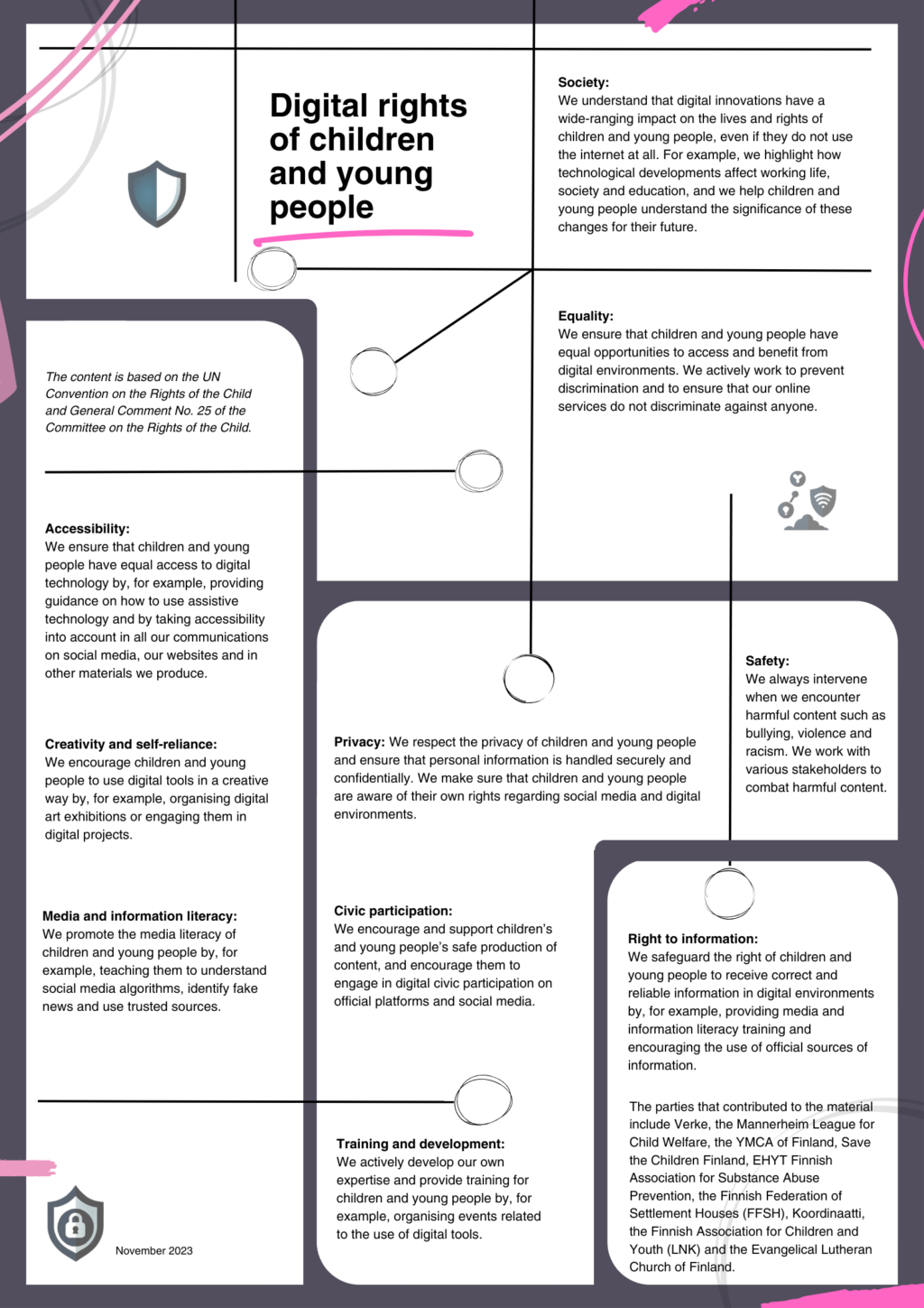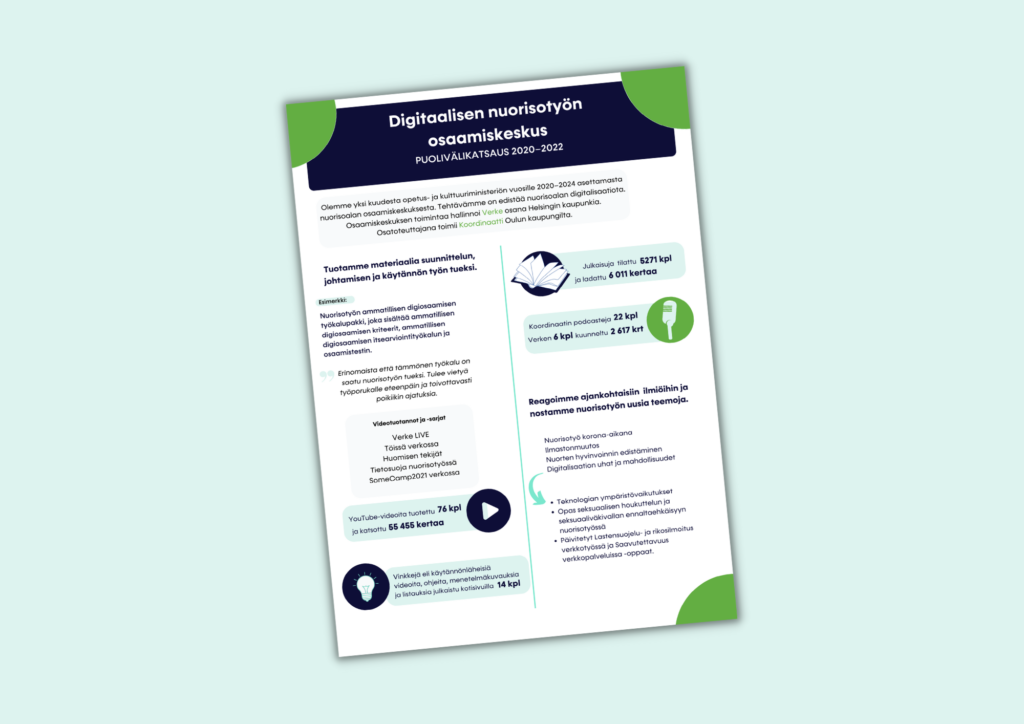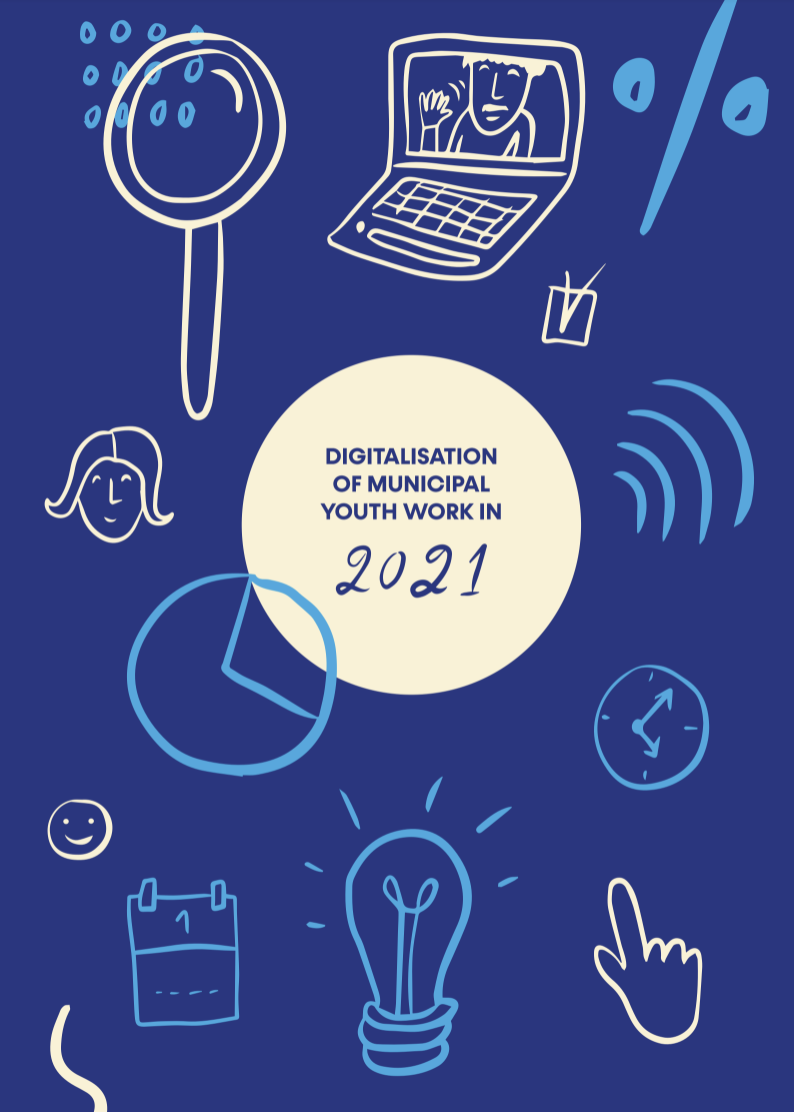Based on the support material for youth workers, “Rights of children and young people in digital environments”, we have compiled a list of tips. The tips explain how the ten-point publication on the rights of children and young people in digital environments can be taken into account in a concrete manner in youth work.
Tips for activities: Rights of children and young people in digital environments

-
Ensure that young people have unhindered access to digital resources. In practice, this means, for example, that websites and digital platforms used by youth work are accessible to different user groups, including young people with special needs. Provide training and support for the use of assistive technology such as screen readers and text-to-speech services. Remember to also ensure that all your posts and communications, such as social media posts and website content, are clear and understandable for people of different ages and backgrounds.
-
Check and ensure that the social media platforms and websites you use do not discriminate against anyone. This can refer to, for example, the production and publication of culturally sensitive and multilingual materials. Take different cultural and social backgrounds into account in content production. Ensure that all young people can participate in the activities and that their voices are heard equally.
-
Teach young people the basics of protecting their privacy in digital environments. This includes improving their awareness of how personal information is collected and used online, as well as practical guidance on managing privacy settings on social media platforms. Organise workshops or discussions that cover these themes.
-
Create clear policies and guidelines on what to do if a young person encounters harmful content online. Learn to identify and report any harmful material such as bullying, violence and racism. Collaborate with other organisations and authorities to tackle harmful content.
-
Ensure that young people receive reliable and up-to-date information on different topics. This can mean recommending reliable and objective sources of information, as well as teaching young people to identify misleading information and fake news. Discuss critical thinking and assessment of information with young people.
-
Teach young people to understand how the media work and the extent of their influence. This may include training them to understand social media algorithms, assess the reliability of different media channels and identify fake news. Organise workshops and group discussions on these topics.
-
Encourage young people to use digital tools in a creative and productive way. For example, organise digital art workshops, coding courses, AI workshops or other projects where young people can express themselves and develop their digital skills. This can also include sessions where young people design their own apps, websites or digital content. You can also support young people in implementing their own digital projects by providing them with technical assistance and advice.v
-
Encourage young people to engage in digital civic participation in a safe and responsible way. This can mean things such as organising training courses on how to use social media to create positive change or how to participate in online discussions in a constructive way.
-
Teach young people to understand how digital innovations affect society and their own lives. Organise discussions and workshops on topics such as the impact of technology on working life, education and daily life. This can help young people understand how they can adapt to these changes and utilise them in their own lives.
-
Continuously develop your own competence in digital issues and share this information with young people. Attend training sessions on different digital tools and technologies. This may include the basics of social media, digital security and programming or introductions to the latest technological innovations. Continuous training and development ensure that both youth workers and young people are up to date on digital trends and changes.



